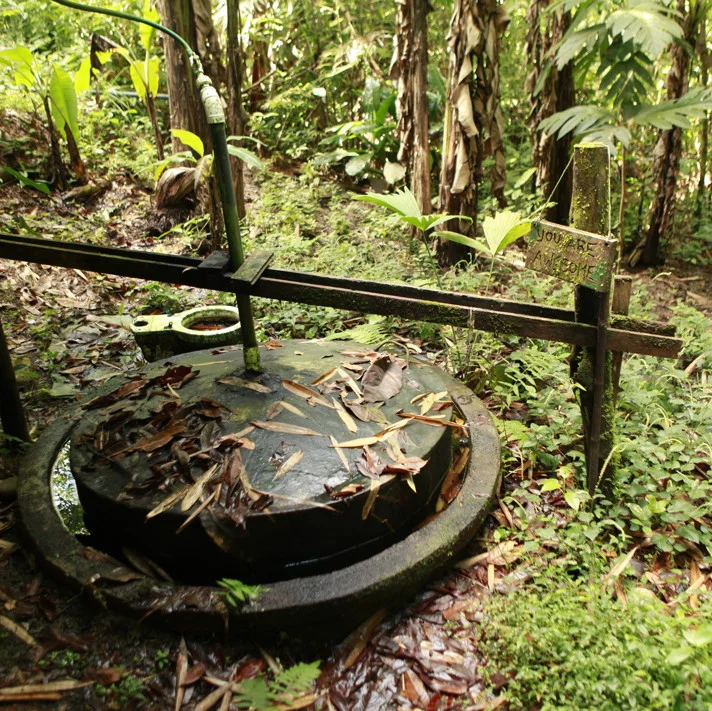The Biodigester
By Mike Paladino, 2019 Rancho Mastatal Apprentice
It's 5.30 am in the dewy morning rainforest of Mastatal – the cacophony of squawks and birdsong remind us that the winged beings have begun their daily business of foraging for themselves and their young, the toads have tucked themselves into the nook of a tree or within a pile of leaves to avoid the relentless heat of the new day, and one by one the guests at Rancho Mastatal stretch and yawn their way out of their abodes and ease their way towards their first cup of coffee. Within moments of a couple of team members arriving, one opens a valve on a stove and WHOOSH! sparks the flame upon which we will cook our breakfast. But the source for this gas isn't of your average origin. This fuel comes from one of the most potentially troublesome yet profoundly utile resources on Earth: poo.
Here at the Ranch we are utilizing two means of generating alternative energy known as “biodigesters.” A biodigester houses various bacterial species to break down organic matter and capture biogas (namely, methane) released by the bacteria in a process called anaerobic fermentation – i.e. the organic matter is digested by the microbes in the absence of oxygen. In the particular case of Rancho Mastatal and many other sustainability centres around the globe, the common organic matter for these microscopic busybodies is excrement, primarily bovine with a smaller source coming from yours truly. There are several kinds of microbes at work here. Some break the matter into simpler molecules of sugars and acids. Other microbes, which find oxygen toxic, are able to break down the simple organic matter to form gases. The ultimate end result of this process is both energy for heat and electricity as well as valuable soil amendments which we disperse throughout our gardens. Essentially all of our breakfasts (roughly 30% of all food cooked here) are prepared solely with the captured methane gas from the combined two mechanism. It is estimated that reliance upon propane as our major cooking gas was cut by roughly 50% percent after the installation of the biodigester systems.
The human waste system is (and should remain) an ultimately hands-off process. A six-foot deep brick tank surrounded by an air seal was installed seven years ago and inoculated with bacteria to jump start the production of biogas. As the two toilets are flushed, they drain into the tank where the material broken down by the bacteria and transformed into methane which is piped directly to our stove top. The system involving cow manure demands daily attention, but can usually be tended within thirty minutes or less. It requires adding fresh cow patties (one and a half recycled rice bags for us) to a 55-gallon barrel and filling it up with water. It is necessary to pulverize the material so that it becomes water soluble – roughly 15 liters for every kilogram of organic matter. Here it is left to sit for a twenty four hour period prior to being pumped into the four barrels below. As the solids settle to the top, the liquid is moved through the series of tanks below before finally arriving in a PVC bag. The gas is captured and then join the same pipe before reaching the kitchen. The solids are tossed into a 14-day compost rotation before they arrive to the gardens to be sifted and applied to our beds.
Any technology that enables us to transform abandoned “waste” into usable energy shows much promise for small-scale homesteads striving for self-sufficiency as well as society at large. And that's not just another hippie talking s&%t.



